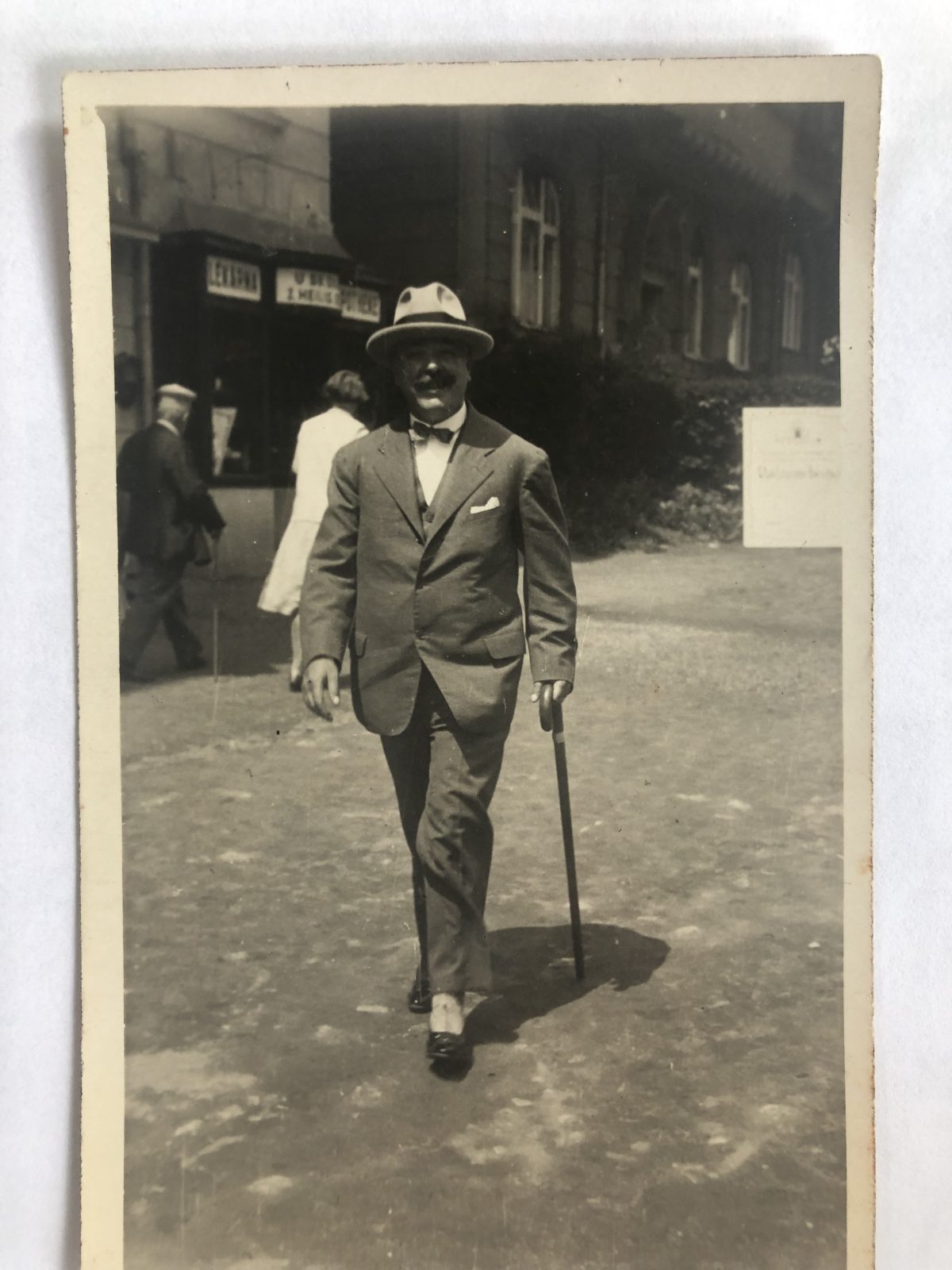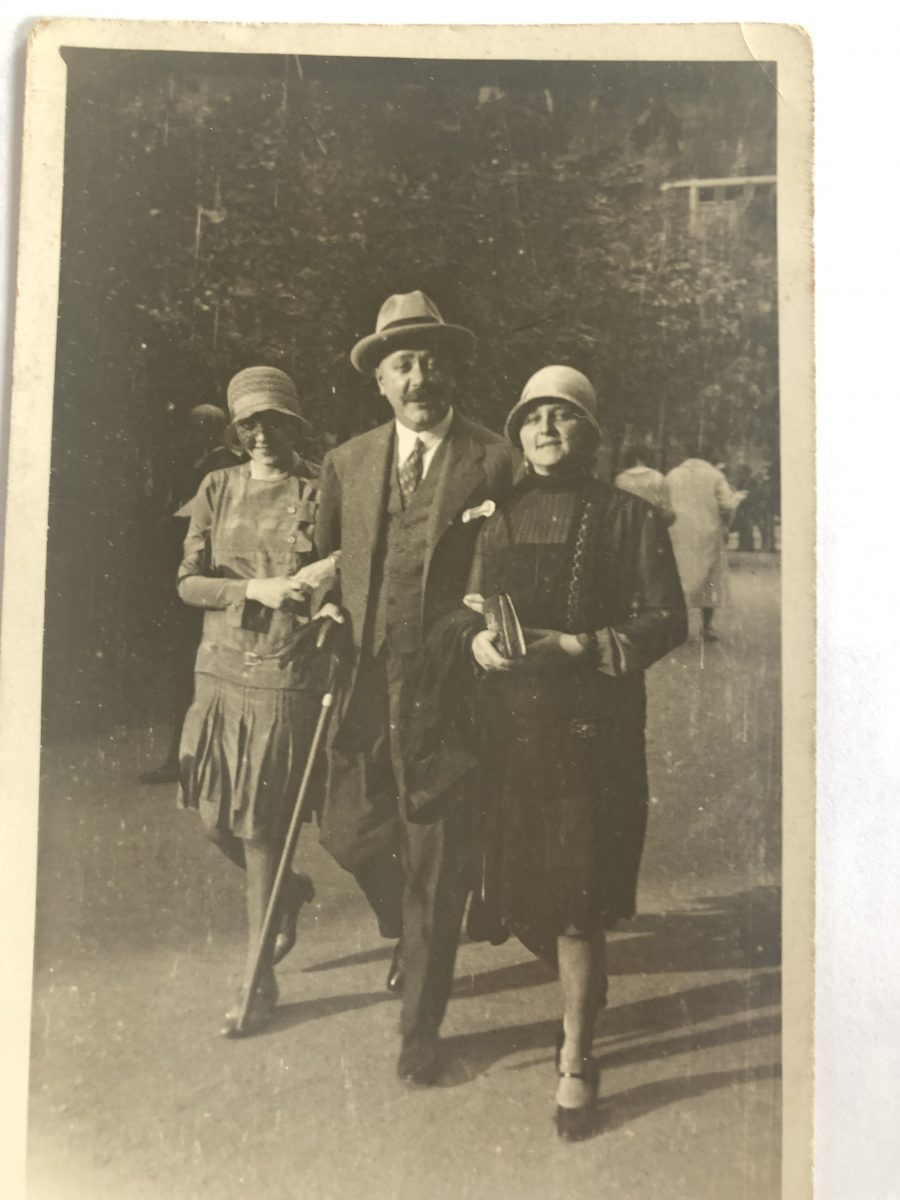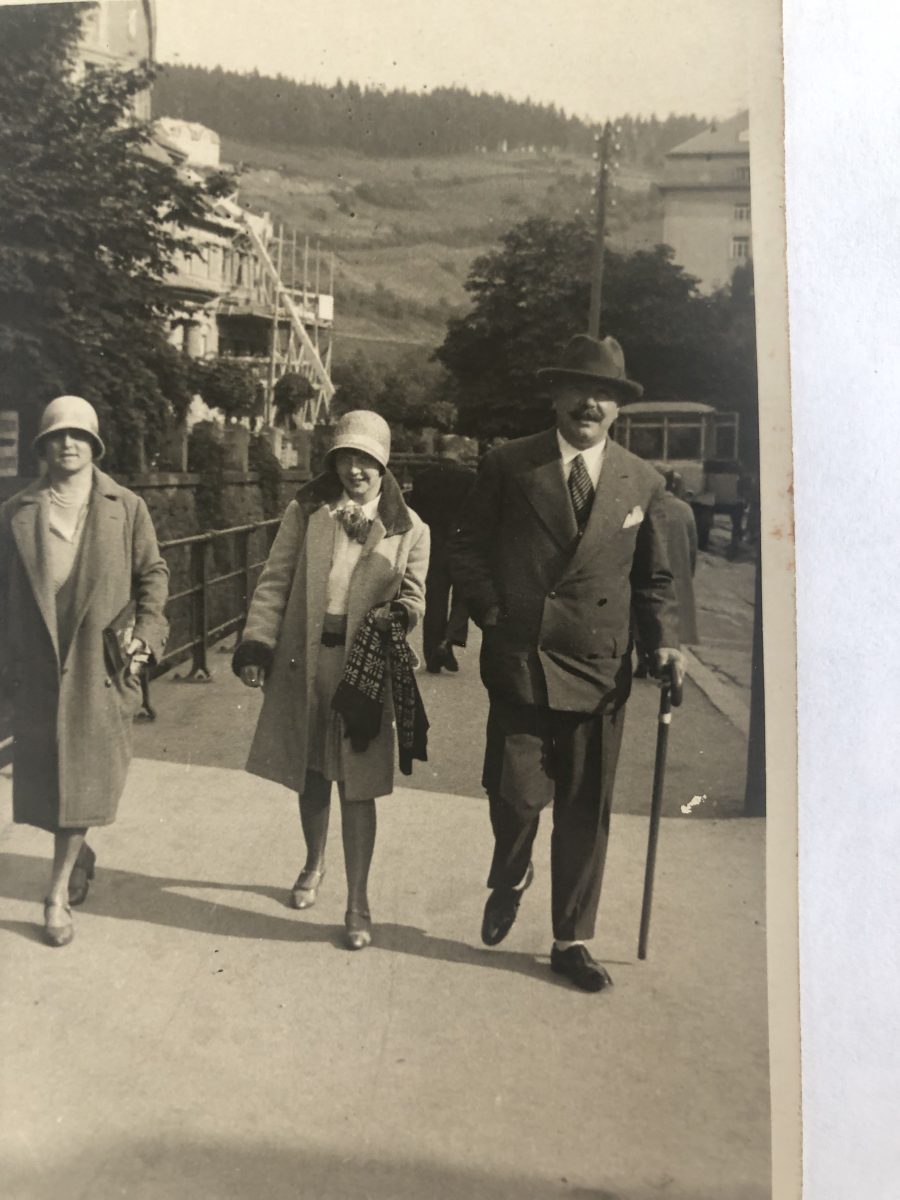This is a story about the tragic life of a Jewish doctor from Uzhhorod Mandel Mór (Mor Mandel), who was one of the leading personalities in the Hungarian professional, sports and cultural life of Uzhhorod in the Czechoslovak period. His life started in the small village of Botfolva in Uzhanshchyna (Uzhanskyi region/ Ung comitat), continued in Siberia, and ended in one of the Nazi death camps.
Austro-Hungary
Education
On January 21, 1885 not far from Uzhhorod (Ungvar then) in the village Botfolva a baby-son, Mór, was born to a large Jewish family. His parents – Lajos and Róza (Rose) Mandel, born Moskovics(Moshkovych), – cared for proper education to their son. In the year 1896 their son started school in Uzhhorod gymnasium named after Drugeth. He took an active part in the work of the gymnasium literary club. He was fond of performimg and reciting poems. He also took part in different patriotic celebrations. He studied optional Ruthenian (Ukrainian) language. He left the gymnasium in 1904 as a student of 8th class, but passed his finals a year later.
In June 1905, Mór Mandel was enrolled as a student of the medical faculty to the Budapest University. In summer, 1910, he successfully graduated from the university and got a diploma.
That’s how the boy from a small village near Uzhhorod at the age of 25 became a member of a prestigious doctors’ “club”.
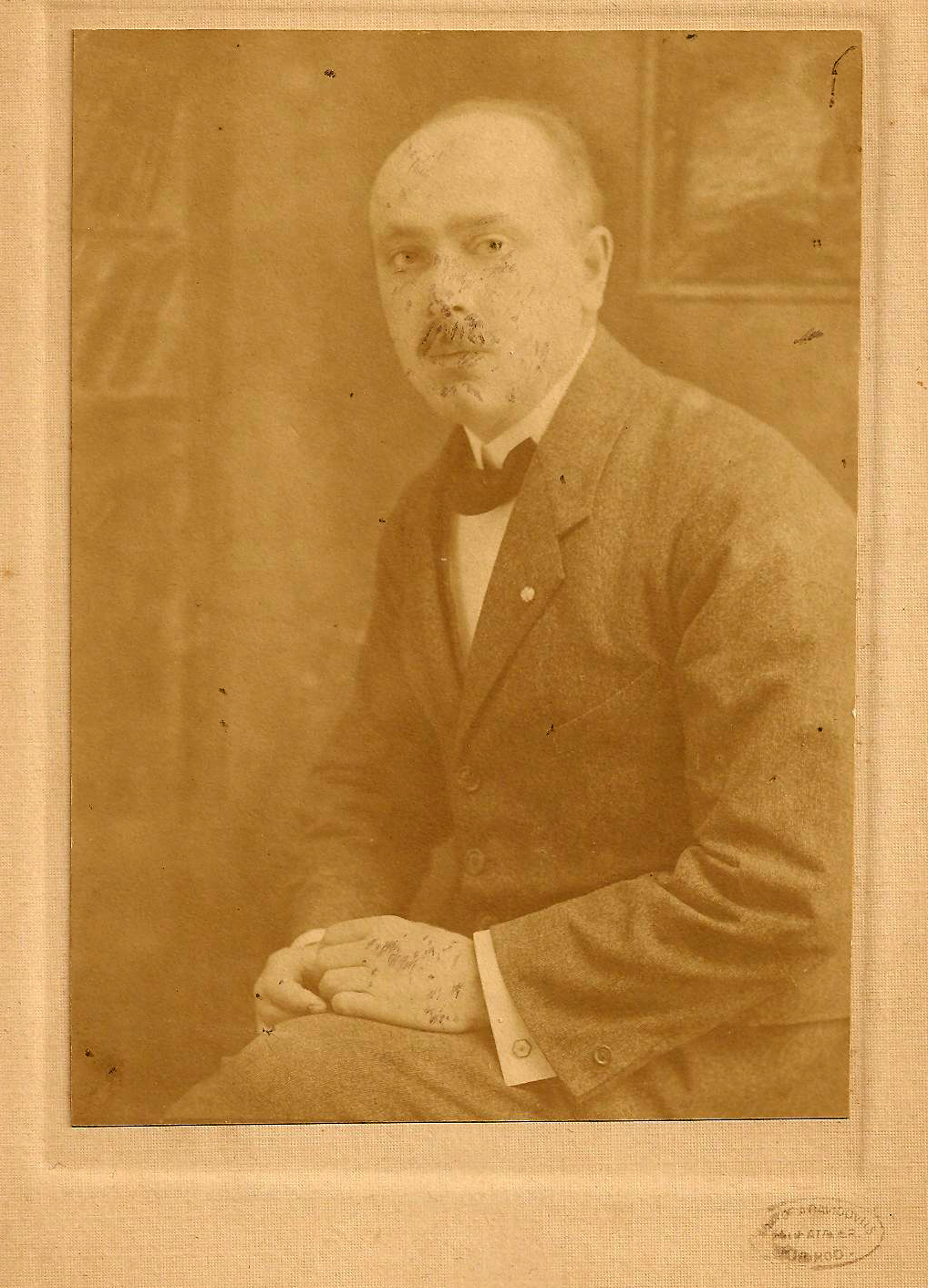
Mor Mandel
Marriage
Mór got a job in Chop town. He fell in love with Maria (Mari) Sicherman (Zikhermann) from Uzhhorod. On January 16, 1912 they had a civil marriage ceremony, and, in five days, on Saturday, in the Kalvaria St. (now Tykha), they had a church ceremony in the Sicherman house. It was a special event not only for Mór and Mari, but for all Uzhhorod because Lajos Sicherman and his wife Regina (born Gutman) married their two daughters: Mari and Eszter (Ester). Eszter’s fiancé was an attorney Zoltán Miklós (Zoltan Miklosh) (Mitelmann) (in 1913 they had a baby boy András (Ondrash), but in 1917 Eszter got sick and died).
Shortly after their marriage, Mór moved to Uzhhorod. Here, on December 4, 1912, the young couple gave a birth to their daughter Magda. In the autumn 1913 Mór went on a scientific trip abroad for several months. Finally, on December 1, 1914 he began to practise as a doctor. His surgery was in the city centre – in Kozyntsi St., 1 (today Korzo St., formerly The Golden Key store), on the ground floor.
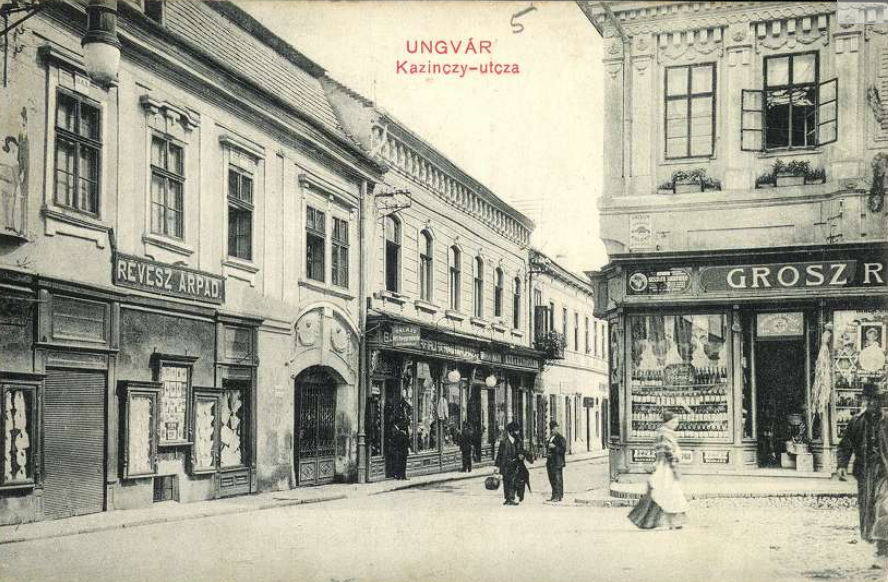
Kozintsy ( now Korzo) Street 1, where Mor Mandel ‘s office was
Captivity
In the summer, 1914, the First World War started in Europe. Mór (Moritz) as a reservist of the 66th Infantry Regiment that stationed in Uzhgorod, was called up for military service as a regimental doctor assistant. He took part in the first victorious battle of the Austro-Hungarian army near Krasnyk (Lublin Voivodeship, Poland) on August 23-25, 1914. Unfortunately, the battle resulted with captivity for Mór and some soldiers. They were sent by train deep into Russia, to Siberia. At first, allegedly, to Tobolsk, then to Kansk (Krasnoyarskyi Krai (Region)), where was one of the largest prisoner-of-war camps. In Uzhhorod, the news about Mór’s fate was known only on October 28, 1914 due to an official statement from the military authorities.
In November Mór’s wife got his letter, which reached Uzhhorod via Copenhagen (Denmark). He mentioned briefly that he was in Tobolsk. Little is known about this period of his life. There were also a few people with him from Uzhhorod in the camp: regimental doctor Kádos Lajos (Layosh Kadosh), Tomkó Gyula (Dyula Tomko), Fischmann Sámuel (Samuel Fishmann) and others. Mór himself remained faithful to the oath of Hippocrates and went on treating people. In October, 1915 a well-known German Red Cross nurse Magdalena von Walsleben (Steinaeker) visited the camp. She portrayed Mór as a very warm-hearted, kind, brave man and a true hero, who helped people in far Siberia to survive in harsh conditions.
The long-waited freedom came in the last year of the world war. On February 21, 1918, Mór took a train from Kansk and, after a journey of almost a month, he got to Uzhgorod. On Saturday, March 16, 1918, a Siberian prisoner came home to Uzhhorod.
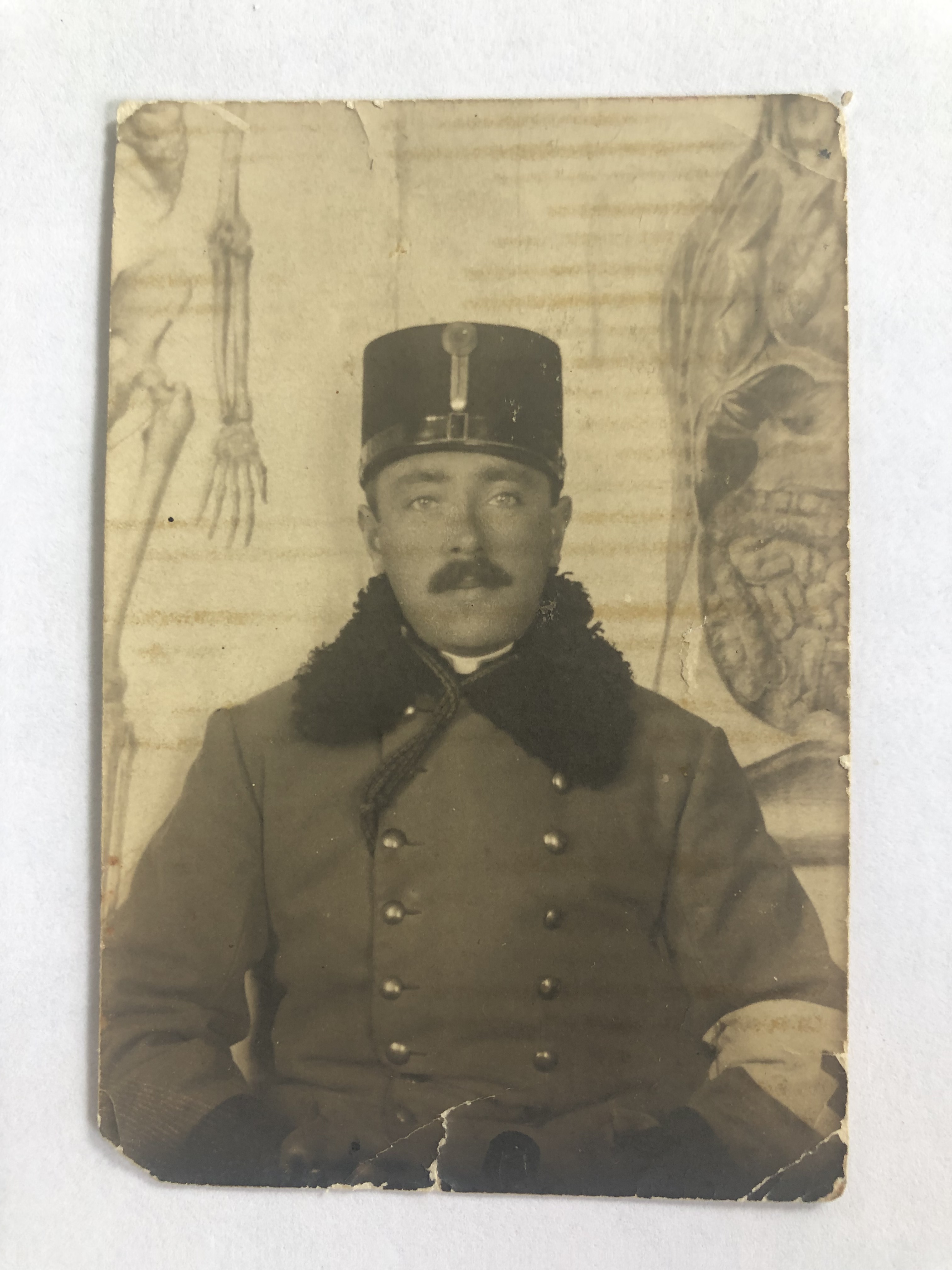
Мор Мандел як військовий лікар
Politics
Being at home, Mór resumed his private medical practice and became actively involved in local politics. On November 17, 1918, the Uzhhorod branch of the International Social-Democratic Party of Hungary was established in the county building (now the Joseph Bokshay Transcarpathian Art Museum). On December 15, 1918, Mór himself, as its representative, became a member of the Uzhhorod Labour Council. The council held meetings in the building of the old city hall (now it’s the building of Uzhhorod Commercial College). But it did not last for long, because on January 12, 1919, Czechoslovak troops entered Uzhhorod. In September 1919, the region called Subcarpathian Rus officially became a part of Czechoslovakia, and Uzhhorod became its de facto capital.
Czechoslovakia
The new political situation forced Mór (Maurus) Mandel to make a difficult choice. The Uzhhorod doctor made a decision to face the new reality, but during the Czechoslovak period (1919-1938) he strictly adhered to the Hungarian national, linguistic and cultural identity. He became one of the leaders of the Hungarian professional and public life of Uzhhorod and the whole Pidcarpattia (Subcarpathia) as well.
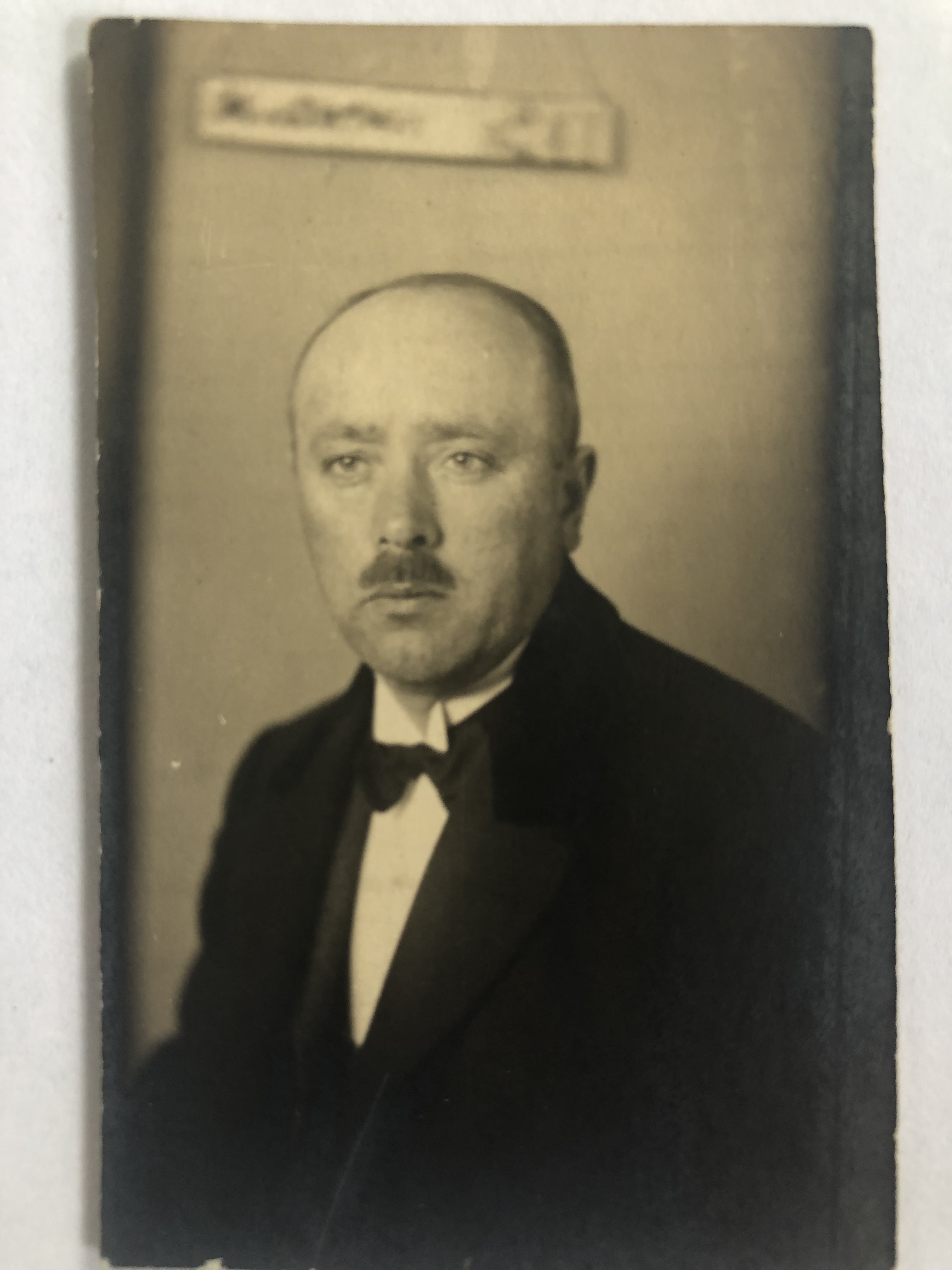
Mor Mandel in the 1920 s.
Medicine
Mór was actively involved in the development of the local medical community, which in 1921 joined the “The Union of Doctors of Pidcarpatska (Subcarpathian) Rus”. He was repeatedly elected as its general secretary and edited their official publication – “Medical Review of Rusynska”. Moreover, he repeatedly moderated the work of medical congresses and traveled as a member of delegations for negotiations to Prague. In 1935, in Uzhhorod, Mór Mandel even published a small book in Hungarian: “On pulmonary tuberculosis. Some new ways of its treatment and new methods of isolation.”
Sport
Mór Mandel took interest in football while studying at the gymnasium. He was made the first chairman of the East Slovak Football League of Subcarpathian region, that was established in the building of the Korona Hotel (recently destroyed) in 1921. On March 20, the same year, a labour sports society was founded in Uzhhorod: the Uzhhorod Society of Workers’ Brotherhood (UMTE in Hungarian). It was headed by Svingula Ferenc (Ferents Shwingula), and Mór Mandel was elected as an executive director. Later he resigned from the club’s management, but remained their doctor. During the 1920s and 1930s, Mór was also the official doctor of Uzhhorod’s oldest sports club – the UAC (Uzhhorod Athletic Club). Here he collaborated with such famous personalities of the region as doctor Novák Endre (Andriy Novak), pope’s prelate Antal Miklós (Miklosh Antal), an architect Kavasch Sándor (Shandor Kovosh), a manufacturer Kozár Lajos (Layos Kozar) (senior), a bell maker, a politician Egry Ferenc (Ferents Egri), an artist Ijjász (Jaczik) Gyula (Dyula Iyas) or a violinist Plotényi Nándor (Nandor Ploteni), that was old Hungarian elite of Uzhhorod and Uzhanshchyna.
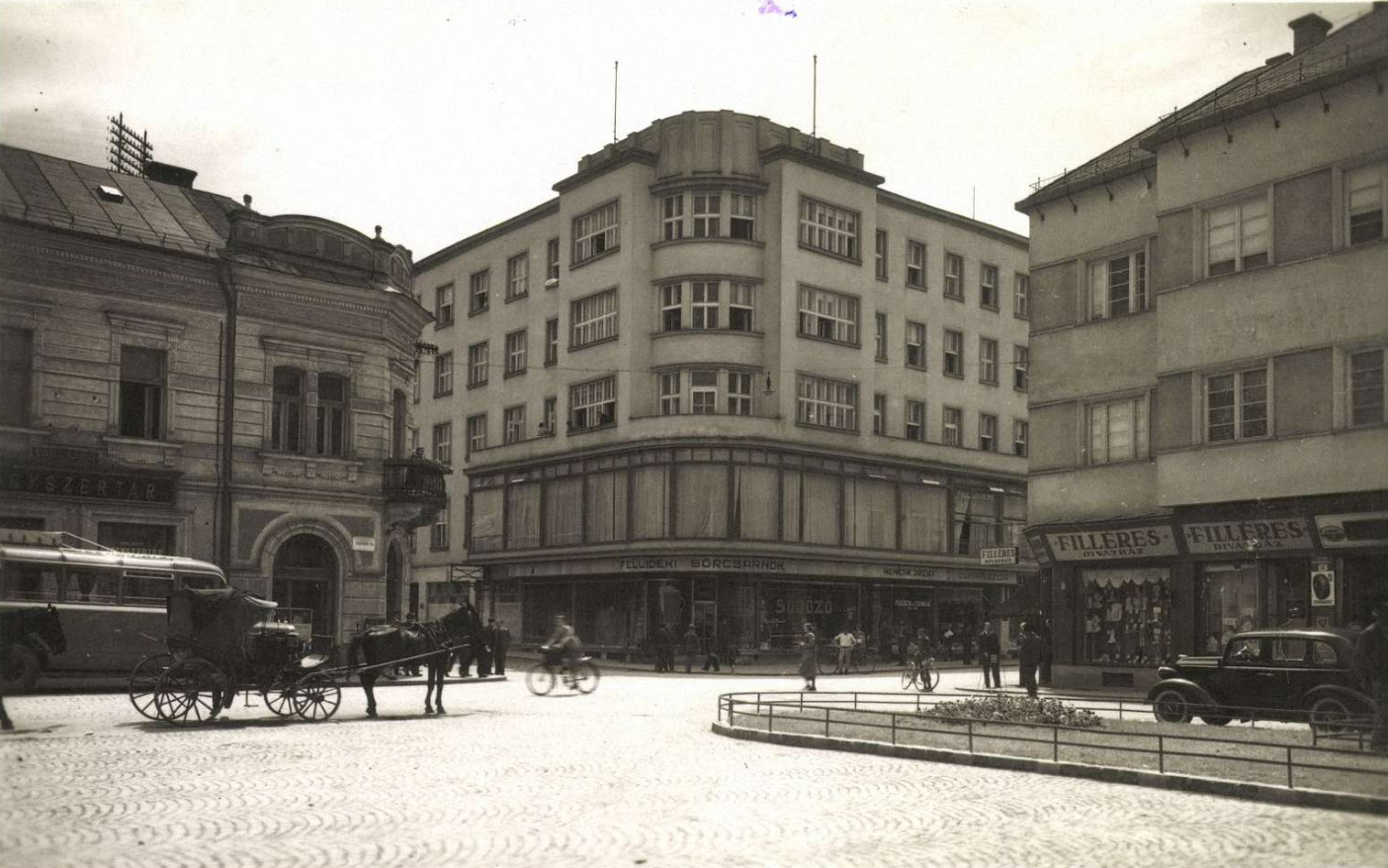
Cofe Verhovina (Felvidijk), Kazintsy Street, 10
Culture
Mór Mandel also made a great contribution to the development of the Hungarian culture in the region. In some communities he held senior positions. Thus, in the “Mosaic”, Mór, along with Szerényi Ferdinand (Ferdinand Sereni), was a co-chairman, and he took the position of a chairman in the “Society for the Support of the Hungarian Theater of Rusynska” in 1930. The mentioned above Ijjász ( Jaczik) Gyula (Dyula Iyas) was elected as a Secretary General of the organization at that time. In this way the doctor took a part in the development of the Hungarian theatre art of the region.
Private Life
In August 1919 another daughter was born to the Mandel. She was given two names –Erzsébet Etel (Elizabeth-Etel). The last name she got in the honour of the deceased sister of Mór’s wife – Etelka Miklós. Unfortunately, Elizabeth-Etel lived only for less than 3 years and died of meningitis on December 21, 1921.
Mór Mandel and his family lived in the center of Uzhhorod in the Kozyntsi St., 5 (now Korzo). They lived on the second floor; had a balcony, piped water, a telephone, and even a car, that was considered uncommon in those times. The family was educated, highly cultured, got acquainted with many well-known people from intellectual societies; had a good library and a collection of paintings. Mór Mandel also owned a vineyard. Magda’s daughter attended an art school run by Erdélyi Béla(Adalbert Erdeli) and Josyp Bokshay. One of earliest portraits by Erdeli dated 1928, “The Young Artist”, could probably portrayed Magda Mandel in her home interior.
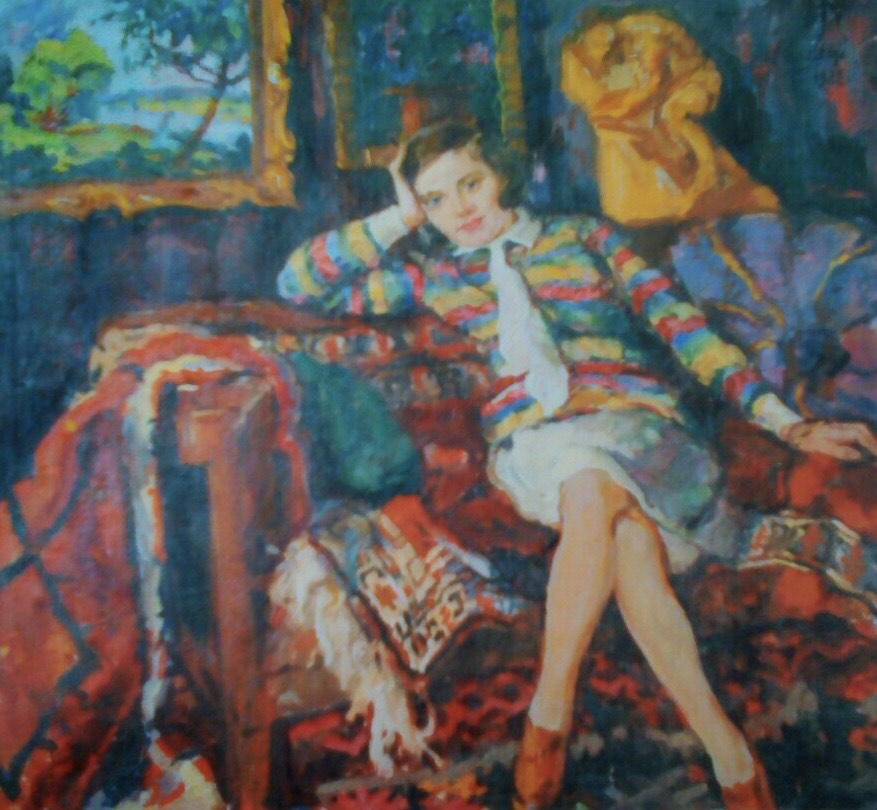
Adalbert Erdely’s “ Young Artist”, 1928
It is mentioned in some sources that Mór Mandel travelled to the United States with his family in the early 1930s and later was preparing to migrate there with his family, but did not manage to do it.
Hungary
Mór Mandel’s life, like all the Jews’, changed after November 1938, when Uzhhorod became Hungarian again. It turned out that long-awaited “return home” to the “old” homeland did not meet their expectations. Hungary under King Franz Josef I, and Hungary under Regent Horty Miklós(Miklosh Horty), were apparently very different states, especially with regard to the Jewish population.
Division
Raising concerns in this regard started very quickly. One of this kind was about the office of the Autonomous Agricultural Union located directly opposite Mandel’s apartment on Kozyntsi St, on the second floor of the former Legion House. It was headed by a journalist and a politician Bródi András(Andrey Brodi), the board member of the “Society named after A. Dukhnovych”. In the same building there were also a cafe “Felvidék (Verkhovyna)” and the showroom of the artists’ society, headed by Adalbert Erdeli. So in the newspaper “Russkii Vestnik”, the official body of the AAU party, published by Bródi (Brodi), since 1939 the cafe “Felvidék (Verkhovyna) was publicized as a cafe only for the Christian community. So Mór Mandel almost daily had to watch this so called visual object of hidden anti-Semitism in his native Uzhhorod.
The term “Christian community” was quickly accepted by the public. This was regarded as the first step towards the hypothetical division into “right” and “wrong” population. The latter were gradually and methodically expelled from all spheres of life. The famous sports club UMTE, where Mór Mandel worked for almost two decades, ceased to function in 1939. Later, the Jews were not allowed to be members of sports clubs at all.
A harbinger of a future catastrophe was the summer of 1941. Thousands of the Jews, without confirmed Hungarian citizenship, were deported from Subcarpathia and other regions to Nazi-occupied Ukraine. At the end of August, almost all of them were killed near Kamyanets-Podilsk. One of the initiators of this deportation was the regent’s commissioner Kozma Miklós (Miklosh Kozma).
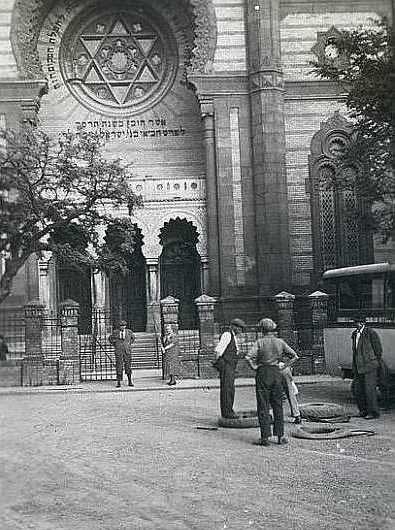
Synagoge Uzhhorod
Discrimination
The most active figure at the local level, who initiated a radical “solution” to the Jewish question, was Uzhhorod Mayor Megay (Pesovnik ) László (Laslo Megai (Peshovnik)), a native of the city, a football player, a journalist and a doctor of law. He was actively assisted by another Uzhhorod resident, the secretary of the local branch of the Hungarian Life Party, a large businessman and a chairman of the Uzhhorod Industrial Society, by Kükemezei József (Jozef Kukemezei). They had many other like-minded associates. One of the example is when during the meeting of the city council commission, Mayor Megay offered to vote on restrictions concerning the rule that the Jews could not shop at the market like other citizens. At the meeting only one, out of 13 members, voted against. This “wrong” Christian turned out to be the head of the Istvan Dendeshi Society, a roman Antal Miklós(Miklosh Ontol). He believed that this decision did not correspond to either Christian or humanistic way of thinking and was contrary to the chivalrous nature of the Hungarians. However, 12 other members of the commission voted in favor. The Jews were even forbidden to bake and sell “kiflyky” (traditional sweet baking).
Then came the turn to the Jewish property. There were enough people willing to get a share from it. Thus, in 1942, Bródi András (Andriy Brodi) applied to the Hungarian government to allocate a share of Jewish property to the Rusyns who were loyal to the Hungarians. The property distribution was done by the government, local authorities and their various units. One of the responsible body was the Uzhhorod Trade Council, that made a choice who of “Christians” would get a Jewish shop, a restaurant, a cafe, a workshop or any other property share. Among the chargeable was also a merchantFundánics Ciril (Cyril Fundanych), whose “legendary” house in the modern Voloshyna Street in 2017 was defended by the Uzhhorod public, disoriented by fake stories.
The Holocaust
The tragic end of Mór Mandel’s life as well as lives of his family and many other Uzhhorod families’ (more than 9000) came in spring 1944.
On Thursday 20, 1944, it was the 55th anniversary of Adolf Hitler (apparently not by chance), under the directive of the Mayor Megay László, the deportation of Uzhhorod Jews to the city ghettos began. There were two locations: in Vyzvolennia St. (now Mynaiska St.), on the territory of Moshkovych brick factory, another – at the end of Munkácsy Mihály St. (Mihay Munkachi) (now Mukachivska St.), on the territory of Glück Lajos wood warehouses. The tragedy and cynicism of the situation is that the Glück family lost two of their sons and two sons-in-law during the First World War, but this fact was of no importance. As well as the fact that Mór Mandel also fought for Hungarian homeland and suffered in captivity for almost 5 years. Now the Hungarian authorities turned the back on their citizens, their veterans, and sent them to concentration camps.
The Mandel family was deported to the ghetto on modern Minayska Street. But it seems that at first only Mór’s wife, Mari, and their daughter, Magda, were sent to the camp, because Jewish doctors and representatives of some other categories had a grace time until June.
According to the documents, the city commission on deportation came to Mór Mandel on June 22. Among the valuables confiscated by the commission were four silver Hungarian coins of St. István (Stephen) with a face value of 5 penge. They were released in the jubilee year, 1938, in honor of the 900th anniversary of the death of the first Hungarian king. Mór Mandel, being a true Hungarian patriot, kept these four coins (probably symbolizing four members of his family) until the last day.
However, since the summer of 1944, Mór Mandel and his wife and daughters have been separated. The latter (his wife and daughters) were sent to Auschwitz, and Mór Mandel got to the concentration camp of Mauthausen, where he died in 1944. His wife Mari died on January 23, 1945. Magda’s daughter, who was with her mum on that tragic day, managed to escape and survive.
Magda returned to Uzhhorod in late March 1945. Mandel’s apartment, then in Sholokhov Street, turned out to be looted; the library and the paintings disappeared. Uzhhorod and its inhabitants had also changed. In fact, the liberation was not quite what was expected. Therefore, many Jews left their homeland. So did Magda Mandel. She lived with her friends, the Braun, for some time and got social assistance from local authorities, then left for Prague, and in 1947 emigrated to the United States.
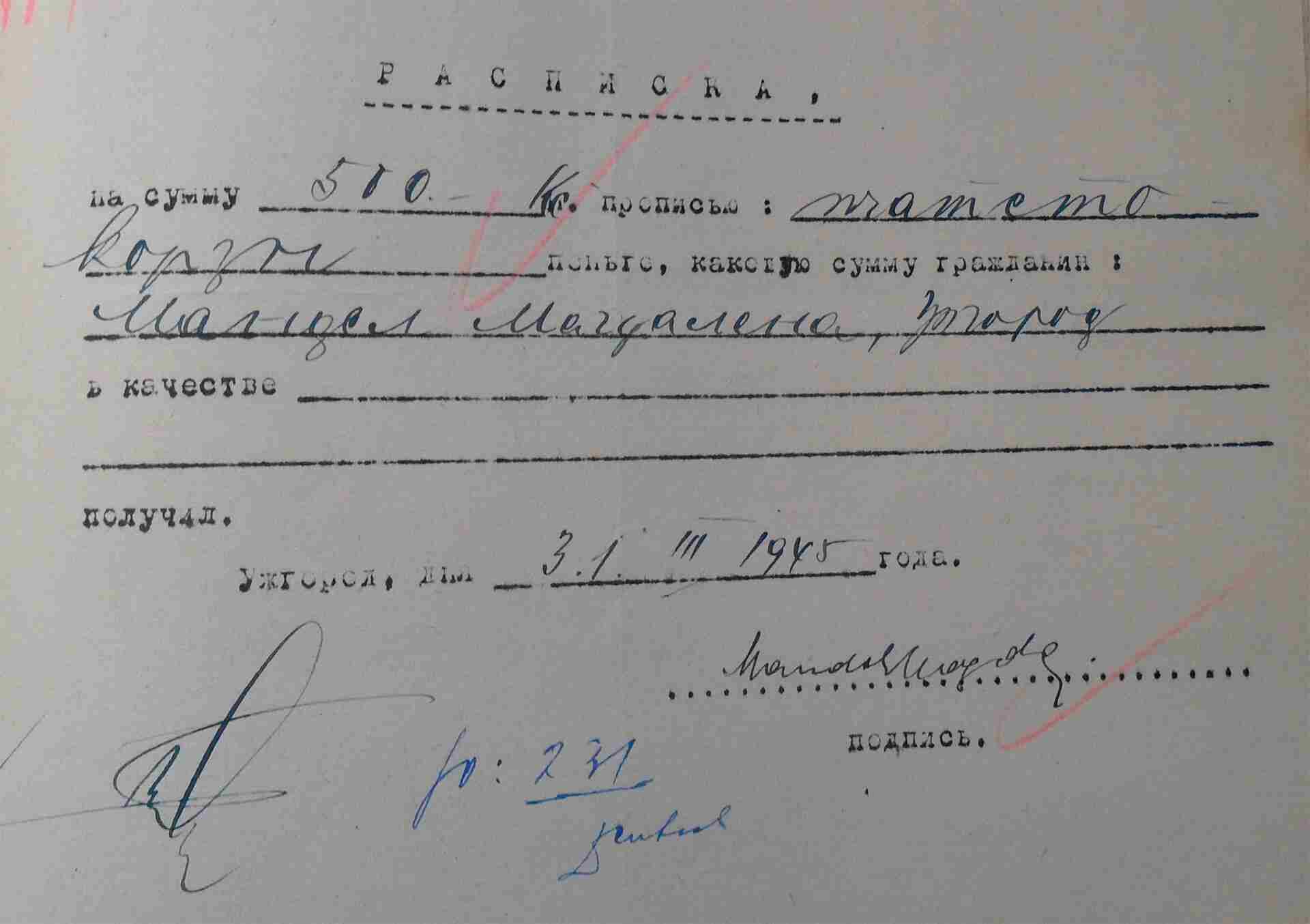
Document On The Receipt Of Aid By Magda Mandel, 1945
The tragic fate of Dr. Mór Mandel and his family is typical to more than 80,000 Transcarpathian Jews, whose lives in a moment turned into a total ruin. And it all started with seemingly small things like separating the privileged “Christian community” or banning the baking of “kiflyky”.
Yosyp Kobal,Varosh
Translation was done by Oksana Panko
The author expresses his sincere gratitude to the descendants of the Mandel family for the provided
archival photographs

